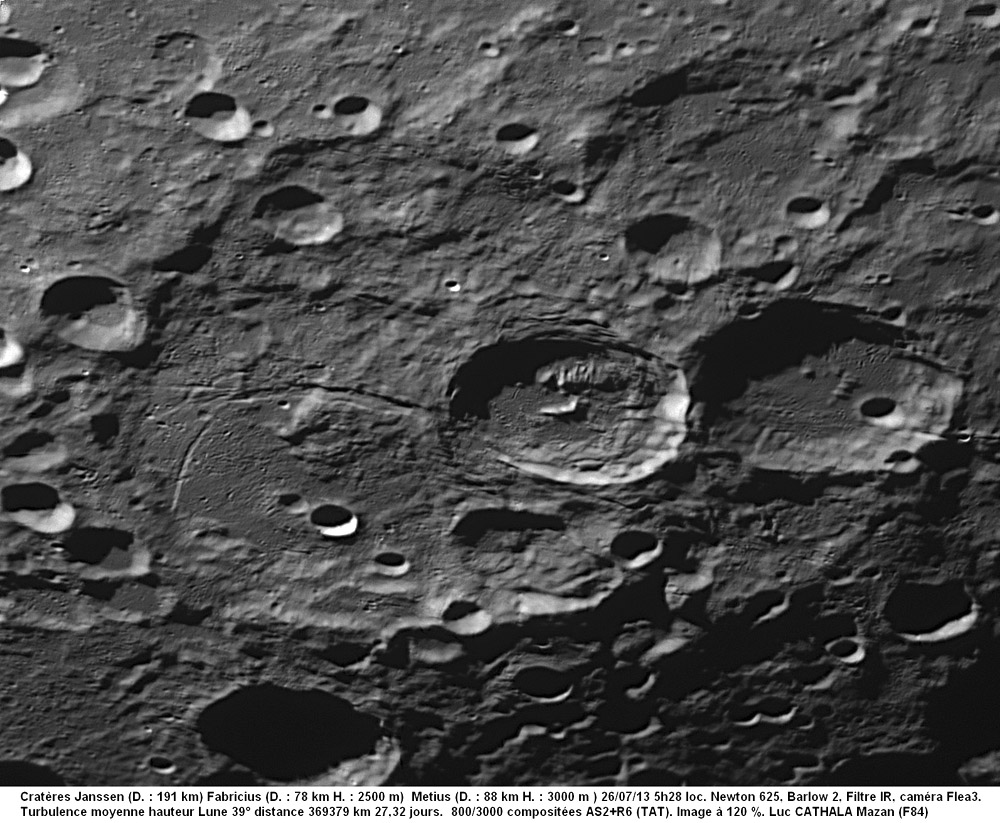Difference between revisions of "October 10, 2013"
(Created page with "__NOTOC__ =Musings Inspired by a 4" Observation= <!-- ws:start:WikiTextHeadingRule:0:<h1> --> <!-- ws:start:WikiTextLocalImageRule:6:<img src="/file/vie...") |
|||
| (6 intermediate revisions by the same user not shown) | |||
| Line 1: | Line 1: | ||
__NOTOC__ | __NOTOC__ | ||
=Musings Inspired by a 4" Observation= | =Musings Inspired by a 4" Observation= | ||
| − | + | <!-- Start of content --> | |
| − | + | <!-- ws:start:WikiTextHeadingRule:0:<h1> --> | |
| − | + | <!-- ws:start:WikiTextLocalImageRule:6:<img src="/file/view/LPOD-Oct10-13.jpg/458368858/LPOD-Oct10-13.jpg" alt="" title="" /> -->[[File:LPOD-Oct10-13.jpg|LPOD-Oct10-13.jpg]]<!-- ws:end:WikiTextLocalImageRule:6 --><br /> | |
<em>north to right image by [mailto:luccat@sfr.fr Luc Cathala], Mazan in Vaucluse in France</em><br /> | <em>north to right image by [mailto:luccat@sfr.fr Luc Cathala], Mazan in Vaucluse in France</em><br /> | ||
<br /> | <br /> | ||
| − | On Tuesday evening while observing with my 4" [http://lpod. | + | On Tuesday evening while observing with my 4" [http://www2.lpod.org/wiki/September_14,_2012 achromat] (Venus was a riot of colors) the center of Janssen was obviously raised, looking like a rough textured log. Luc's excellent view with a telescope of six times larger aperture shows that the high region is the well-known mound cut by the 8 km wide Janssen Rille (which was invisible to me). I have speculated before that the mound could be ejecta from Fabricius (with its one-clawed lobster mountain), but that would mean that the rille is younger than Fabricius, which is unlikely because that crater is young enough to have well-preserved [http://bit.ly/19lUgpg impact melt] on its floor. It is surprising that the rille goes all the way to the crater rim crest, and while it is filled in somewhat it is not completely buried by Fabricius ejecta. However, the southern end of the Rille seems to be cut by secondary craters from Fabricius. Another 40 year old [http://www.lpi.usra.edu/resources/mapcatalog/usgs/I694/ interpretation] is that the mound is ejecta from the formation of the Nectaris Basin which probably occurred sometime near 4 b.y. ago. The rille, however, is probably much younger than that, but unlikely to be as old as Fabricius. The stratigraphy would be that Janssen formed after the large crater that it overlaps to the north, then Nectaris happened emplacing the mound, which some time later was cut by the rille (why did it form?), and later still Fabricius cut through them all. What do you think? <br /> |
<br /> | <br /> | ||
<em>[mailto:tychocrater@yahoo.com Chuck Wood]</em><br /> | <em>[mailto:tychocrater@yahoo.com Chuck Wood]</em><br /> | ||
| Line 14: | Line 14: | ||
<br /> | <br /> | ||
<strong>Related Links</strong><br /> | <strong>Related Links</strong><br /> | ||
| − | <em>[ | + | <em>[[21st Century Atlas of the Moon|21st Century Atlas]]</em> chart 5 .<br /> |
Fabricius was the [http://www.spacedaily.com/reports/Celebrating_400_Years_Of_Sunspot_Observations_999.html first] to write a paper on sunspots.<br /> | Fabricius was the [http://www.spacedaily.com/reports/Celebrating_400_Years_Of_Sunspot_Observations_999.html first] to write a paper on sunspots.<br /> | ||
<br /> | <br /> | ||
| + | <p><b>Yesterday's LPOD:</b> [[October 9, 2013|Side-Squashed]] </p> | ||
| + | <p><b>Tomorrow's LPOD:</b> [[October 11, 2013|Terminalogy Tutor]] </p> | ||
<hr /> | <hr /> | ||
| − | + | {{wiki/ArticleFooter}} | |
| − | |||
| − | |||
| − | |||
Latest revision as of 07:35, 28 October 2018
Musings Inspired by a 4" Observation

north to right image by Luc Cathala, Mazan in Vaucluse in France
On Tuesday evening while observing with my 4" achromat (Venus was a riot of colors) the center of Janssen was obviously raised, looking like a rough textured log. Luc's excellent view with a telescope of six times larger aperture shows that the high region is the well-known mound cut by the 8 km wide Janssen Rille (which was invisible to me). I have speculated before that the mound could be ejecta from Fabricius (with its one-clawed lobster mountain), but that would mean that the rille is younger than Fabricius, which is unlikely because that crater is young enough to have well-preserved impact melt on its floor. It is surprising that the rille goes all the way to the crater rim crest, and while it is filled in somewhat it is not completely buried by Fabricius ejecta. However, the southern end of the Rille seems to be cut by secondary craters from Fabricius. Another 40 year old interpretation is that the mound is ejecta from the formation of the Nectaris Basin which probably occurred sometime near 4 b.y. ago. The rille, however, is probably much younger than that, but unlikely to be as old as Fabricius. The stratigraphy would be that Janssen formed after the large crater that it overlaps to the north, then Nectaris happened emplacing the mound, which some time later was cut by the rille (why did it form?), and later still Fabricius cut through them all. What do you think?
Chuck Wood
Technical Details
26/07/13 at 3h28 UT with a 625 mm (diameter) F/D 4.37 newtonian telescope + barlow 2 with average turbulence. IR filter with a Point grey Flea 3 camera. 800 pictures stacked over 3000 with Autostackker 2 and treated by ondelettes with Registax 6. Picture at 120 % for details.
Related Links
21st Century Atlas chart 5 .
Fabricius was the first to write a paper on sunspots.
Yesterday's LPOD: Side-Squashed
Tomorrow's LPOD: Terminalogy Tutor
COMMENTS?
Register, Log in, and join in the comments.



